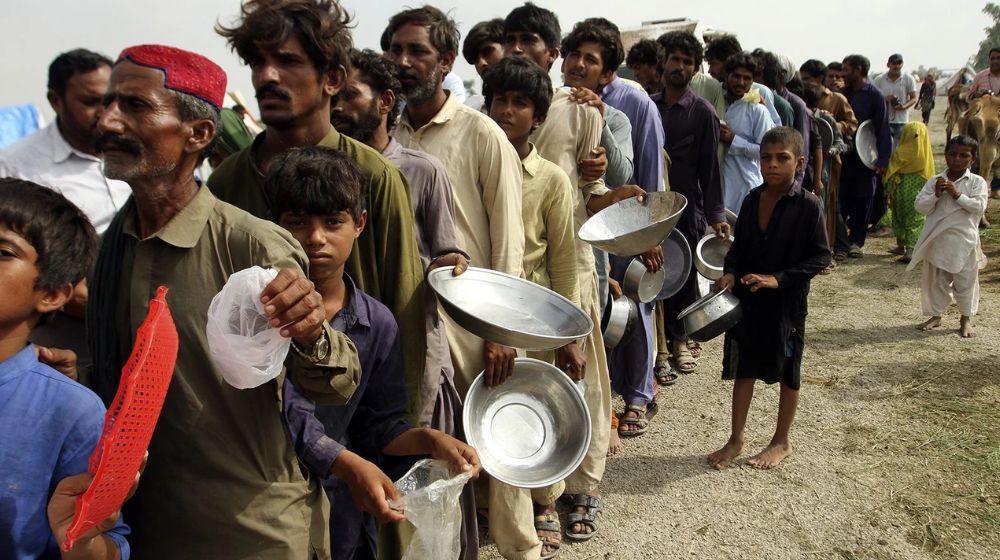World Economic Forum’s Global Risks Report 2023 has identified that a combination of extreme weather events and constrained supply could lead Pakistan’s current cost-of-living crisis into a catastrophic scenario of hunger and distress for millions.
This can also turn the energy crisis into a humanitarian crisis. Energy shortages – because of supplier shut-offs or natural, accidental, or intentional damage to pipelines and energy grids – could cause widespread blackouts and fatalities if combined with seasonal extreme weather.
The report has identified the top ten risks that pose the biggest threats to Pakistan. These risks include 1) Digital power concentration and monopolies, 2) Failure of cybersecurity measures (including loss of privacy, data fraud or theft, cyber espionage), 3) Rapid and/or sustained inflation 4) Debt crises 5) State collapse 6) Lack of widespread digital services and digital inequality 7) Interstate conflict 8) Terrestrial biodiversity loss and ecosystem collapse 9) Terrorist attacks and 10) Employment and livelihood crisis.
Amir Jahangir, Chief Executive Officer Mishal Pakistan, the Partner Institute for New Economy and Societies Platforms of the World Economic Forum said, “the Global Risks Report 2023 identifies that for Pakistan, both the affordability and availability of basic necessities can stoke social and political instability”.
He further said, “Last year, the increase in fuel prices alone led to protests in an estimated 92 countries, some of which resulted in political upheaval and fatalities, alongside strikes and industrial shutdowns”.
“The impact of insecurity will continue to be felt in Pakistan and may also exacerbate instability due to simultaneous food and debt crises. Resulting in the emergence of a possible more technocracy-based decision-making leadership framework,” he added.
The report identifies that the cost-of-living crisis is the biggest short-term risk while the failure of climate mitigation and climate adaptation is the largest long-term concerns. The geopolitical rivalries and inward-looking stances will heighten economic constraints and further exacerbate both short- and long-term risks.
The report says that estimates suggest over 800,000 hectares of farmland have been wiped out by 2022 floods in Pakistan. This has resulted in increasing commodity prices significantly in a country that is already grappling with a record 27 percent inflation.
Water stress is also widespread in Pakistan, this particularly impacts women and girls responsible for water collection, with knock-on impacts for health and education outcomes. More widespread scarcity, combined with paralysis of international cooperation mechanisms, has necessitated a degree of water nationalism, resulting in prolonged disputes between neighboring states and countries. In the face of spreading humanitarian crises and state instability, water infrastructure could continue to be used both as a weapon and target, mirroring past water conflicts and terrorism in India, Pakistan, and Afghanistan.
On the international front, at present, the global pandemic and war in Europe have brought energy, inflation, food, and security crises back to the fore. These create follow-on risks that will dominate the next two years: the risk of recession; growing debt distress; a continued cost of living crisis; polarized societies enabled by disinformation and misinformation; a hiatus on rapid climate action; and zero-sum geo-economic warfare.
“The short-term risk landscape is dominated by energy, food, debt, and disasters. Those that are already the most vulnerable are suffering – and in the face of multiple crises, those who qualify as vulnerable are rapidly expanding, in rich and poor countries alike. In this already toxic mix of known and rising global risks, a new shock event, from a new military conflict to a new virus, could become unmanageable. Climate and human development therefore must be at the core of concerns of global leaders to boost resilience against future shocks,” said Saadia Zahidi, Managing Director, World Economic Forum.
The report, produced in partnership with Marsh McLennan and Zurich Insurance Group, draws on the views of over 1,200 global risk experts, policymakers, and industry leaders. Across three timeframes, it paints a picture of the global risks landscape that is both new and eerily familiar, as the world faces many pre-existing risks that previously appeared to be receding.
The Global Risks Report is a pillar of the Forum’s Global Risks Initiative which works to promote a greater common understanding of short-, mid-, and long-term global risks to enable learning on risk preparedness and resilience.
This year’s report also examines how present and future risks can interact with each other to form a “polycrisis” – a cluster of related global risks with compounding impacts and unpredictable consequences. The report explores “Resource Rivalry”, a potential cluster of interrelated environmental, geopolitical, and socioeconomic risks relating to the supply of and demand for natural resources including food, water, and energy.





















